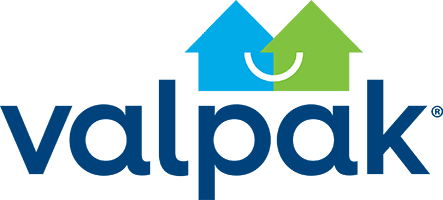Beyond direct sales, most online searches end in a phone call. People still want to dial a phone number and talk to a real person when doing research. Here are 10 steps that can help you use calls and real-time call tracking software with CRM integration to improve the customer journey and increase sales.
1. Answer Inbound Calls
One of the best ways to turn someone off of a small business is by not having an efficient and professional call tracking solution for answering the phones. Having a phone system capable of handling the call volume you receive is crucial to success. This includes having enough staff in your contact center to answer calls in a timely manner, call waiting or call routing options for those who cannot be tended to immediately and a professional message that prompts callers to leave a call recording to be called back.
2. Train Your Sales Team & Call Center
Your employees are a direct reflection of your company and how they are trained can have a serious impact on your sales and overall profit. Implementing standard training procedures will ensure everyone has access to the same information and give you the opportunity to set expectations for all interactions. This Houston Chronicle article outlines how to define your customers’ needs and cater a training program to meet them.
3. Know Why They’re Calling
If you have custom tracking numbers, knowing which marketing channel was the reason for a call will be easy for your salesforce to note. If custom tracking has not been implemented or does not fit into your ad campaign, train your staff to ask why they’re calling during their conversation with customers. This information will help you make better decisions in the future about where to invest your marketing dollars for the best results.
4. Analyze Incoming Calls
Often, customers just want someone to listen to their complaints and respond professionally. Sometimes it can be difficult to do this when the tone being used is negative or off-putting, but by listening you are giving them an outlet (beyond IVR and social media) to be heard.
5. Test Your Customer Experience Team
The best way to understand the type of experience your customers are receiving is to put yourself in a position to receive that same experience. While call recordings and call analytics can be effective tools for making sure employees are interacting with customers the way you expect, it is no secret that when they know they are being observed, employees will be on their best behavior. By calling in response to a marketing campaign as a prospective customer, you will get a true sense of how an employee communicates and encourage everyone to behave as if they were talking to their boss.
6. Ask Questions to Improve Conversion Rates
Gathering conversation intelligence from your callers will help you make a more educated sales pitch later on. How did they hear about your company? Have they done business with you before? Are they looking for pricing, store hours, or something else? What do they not want to learn more about? The questions you ask will vary depending on the type of business, but taking the time to gather the best call data will help your marketing efforts in the long run.
7. Always Be Closing
You can have great conversations with customers, but without the ability to combine your knowledge of product offerings with a confident and effective sales pitch, you will not receive the outcome you are looking for. There are several different closing techniques that have been discussed at length, from directly asking a customer if they are interested in making the purchase to making suggestions and allowing the individual to make a decision. Knowing the difference between the techniques and when they should be applied will help your success rate. This list of Top 10 Sales Closing Techniques explains a variety of these and when it is best to use them.
8. Stay Focused
We live in a society that is full of distractions, from social media to text messaging (SMS) to browsing the Internet or simply thinking about other things. The potential for missing a sale increases the less engaged you are with the customer on the other side of the phone. While you may think you are great at multitasking, the fact is that a delayed response or not hearing a person’s entire question are indicators that you are not committed to the conversation and the customer will take notice. For some, it may be enough of a reason to take their business elsewhere and you just lost a sale.
9. Refine Your Skills
No matter how long you have been in sales and how effective you are at gaining a return on your marketing spend, there is always something new about automation and other call tracking features to learn. When you begin thinking that you no longer must improve your skills, you have a greater chance of becoming complacent. Challenge yourself to refine your lead management skills. You will be better for it and your team members will appreciate your efforts.
10. Prioritize Call Management Follow-Up
We all get busy. When a customer calls and expresses interest from a targeted postcard or Google Ads landing page, do not assume they changed their mind because you did not hear back from them after your initial conversation. Customers can change their minds, but sometimes they simply forget to call back and are still interested. Call, follow-up and you may find the results worthwhile.
Turn Marketing Spend Into Call Conversions
Get started with an evaluation of the functionality of your current system. Is it cloud-based? Are you tracking calls? Does it include transcriptions and conversation analytics? Does it integrate with Google Analytics and other digital marketing tools?
If not, Valpak offers a complete call tracking system that can help you track and improve every step of your marketing campaigns.




